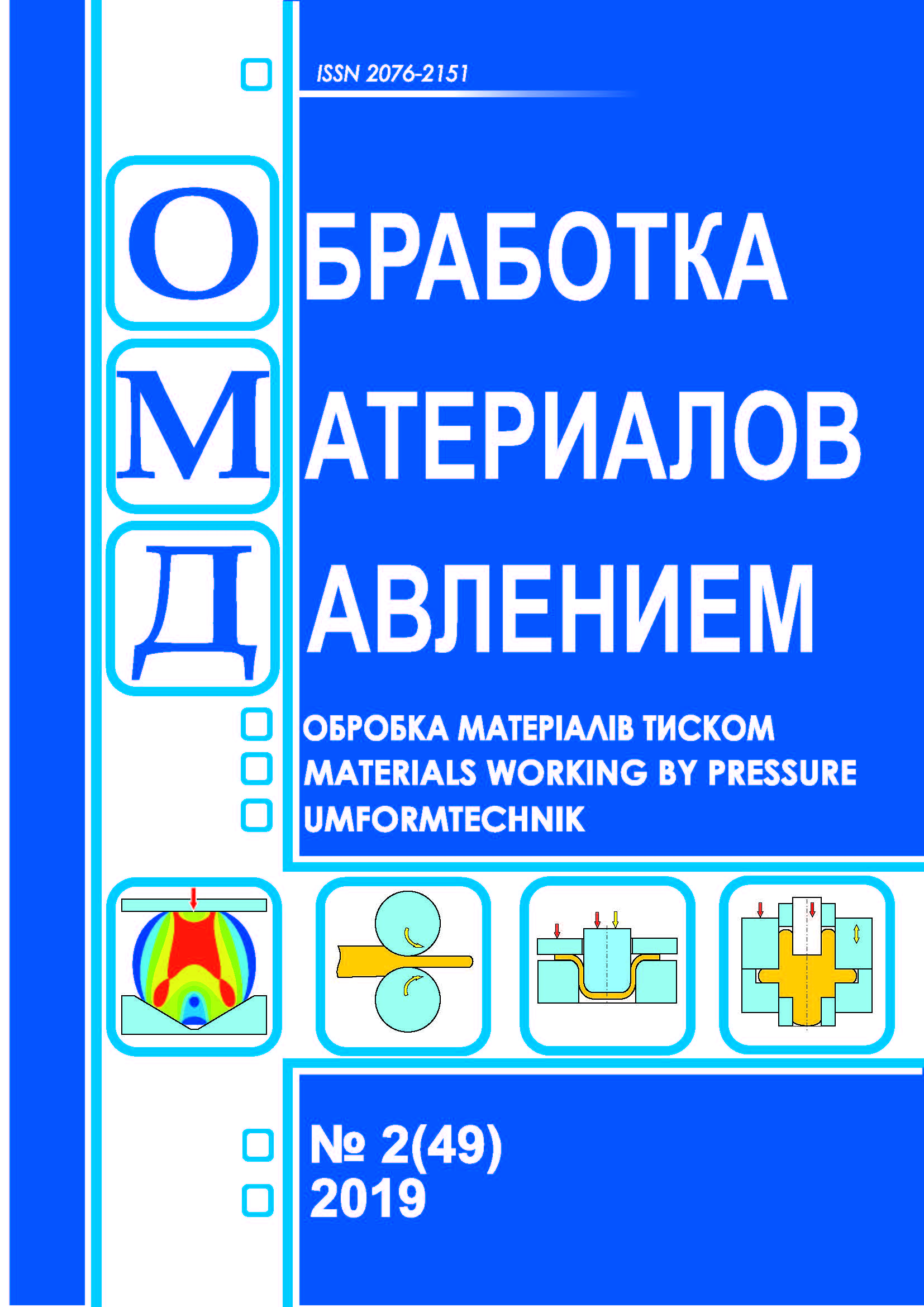Evaluation of the shaping of hollow parts with a flange in the process of radially reverse extrusion by the energy method
DOI:
https://doi.org/10.37142/2076-2151/2019-2(49)41Keywords:
combined radial backward extrusion; hollow parts with a flange; energy method; reduced pressure; shaping.Abstract
Grudkina N. S. Evaluation of the shaping of hollow parts with a flange in the process of radially reverse extrusion by the energy method // Material working by pressure. – 2019. – № 2 (49). - Р. 41-46.
Mathematical modeling of the power regime of the process of combined radially reverse extrusion of hollow parts with a flange is carried out. The energy method of the upper estimate is used, which allows one to obtain data on the energy-power parameters of the process and the stepwise formation of the semi-finished product. The kinematic module with an inclined rectangular border is used in the design scheme of the combined radial reverse extrusion process. To simplify the power of the deformation forces in the area of the trapezoidal module, the upper estimate according to the Cauchy-Bunyakovsky is used. For the first time, a comparative analysis of the reduced strain pressure as a function of the flow velocity of the metal in the vertical direction was carried out using the upper bound and in general form. The influence on the value of the optimal kinematic parameter of simplification of the components of the reduced strain pressure is analyzed. It has been established that the nature of theoretically obtained reduced pressure curves in a general form and using a simplified estimate is preserved for various sets of geometric process parameters. The difference in the obtained optimal values of the relative velocity of the outflow of metal in the vertical direction for direct and simplified calculations can be considered insignificant. The deviation of the theoretically obtained dimensions of the wall of the glass during the process from the experimentally obtained point values does not exceed 3-7 %. A slight mutual discrepancy between the theoretically obtained results is explained by a shift in the optimal value of the relative kinematic parameter, which is responsible for the increment of the semi-finished product in the vertical direction. It is confirmed that the use of the upper estimate does not significantly affect the receipt of data on the shaping and can be considered an effective method of simplifying the components of the reduced pressure and predicting the size of the resulting part.
References
Zhang S.H., Wang Z.R. Some new features in the development of metal forming technology. Journal of Materials Processing Technology. 2004. 1. pp. 39–47.
Aliieva L.I. Processes of combined extrusion and deformation. Materials Working by Pressure. Kramatorsk: DSEA. 2016, 1 (42), pp. 100–108. (in Russian).
Farhoumand A., Ebrahimi R. Analysis of forward–backward-radial extrusion process. Materials and Design. 2009, 30, pp. 2152–2157.
Golovin V.A., Filippov Yu. K., Ignatenko V.N. Features of the kinematics of metal flow during combined cold extrusion of hollow parts with a flange of a given size. Proceedings of the 49th International Conference. Moscow: MAMI, 2005, part 2, pp. 18–20. (in Russian).
Stepansky L.G. Calculations of metal forming processes. Moscow: Mechanical Engineering. 1979, 215 p. (in Russian).
Chudakov P.D. On the calculation of the power of plastic deformation, Izvestiya. Engineering. 1979, 7, pp. 146–148. (in Russian).
Aliieva L.I., Grudkina N.S., Krueger K. Modeling of the process of radial backward extrusion of hollow parts. Bulletin of NTUU “KPI”. Mechanics and Advanced Technologies. 2017, 1 (79), pp. 91–99. DOI: http://dx.doi.org/10.20535/2521-1943.2017.79.95873 (in Russian).
Vlasenko K., Hrudkina N., Reutova I., Chumak O. Development of calculation schemes for the combined extrusion to predict the shape formation of axisymmetric parts with a flange. Eastern European Journal of Enterprise Technologies. 2018, 3/1 (93), pp. 51-59. DOI: https://doi.org/10.15587/1729-4061.2018.131766

